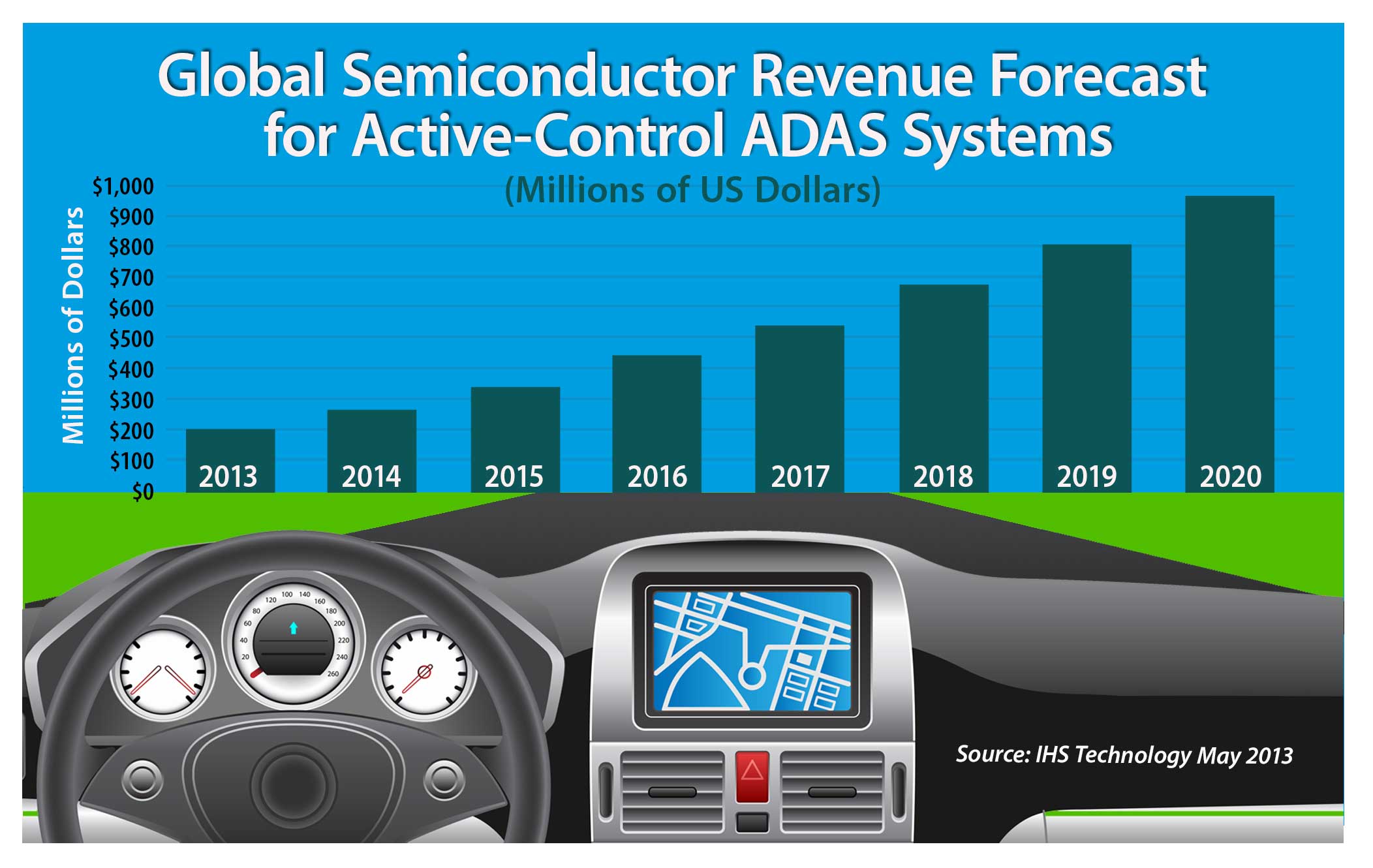Driven by an increasing shift from cars providing alerts in hazardous situations to direct intervention in order to avoid accidents, the global semiconductor market for active-control systems in autonomous vehicles is expected to grow nearly fivefold in just seven years.
In 2020, worldwide revenue for active-control systems in vehicles is predicted to reach $883.9 million, up from $187.3 million in 2013. The increase of nearly $700 million from 2013 to 2020 shows a compound annual growth rate of 25% for the seven year period, as shown in the infographic below.

Active-control mechanisms can be distinguished from their passive-warning counterparts – older systems that have been around much longer— by the degree of driver involvement in both systems.
According to Akhilesh Kona, analyst for automotive semiconductors, passive mechanisms in the autonomous vehicle help identify potentially hazardous conditions, but the driver is still responsible for avoiding the accident. “In active-control systems, the mechanism takes over if the driver does not react to warnings so that the vehicle can avoid an accident or minimize the impact of a collision,” he said.
One example of a passive mechanism is lane-departure warning, which monitors the lane markings on a roadway and alerts the driver when the car begins to veer out of its lane if the turn signals aren’t in use. The driver must still take control of the car in this case. But in an active-control mechanism like a lane-keep assist, the car acts in a more proactive way. If the driver is unresponsive after a warning from the car, the car takes action to keep the vehicle in line.
“Overall, active-control systems are growing faster than passive-warning mechanisms,” said Luca DeAmbroggi, principal analyst for automotive semiconductors at HIS. “Compared to the phenomenal growth of the active-control semiconductor market, the chip market for passive-warning systems is projected to grow at a less furious pace from 2013 to 2020.”
Research conducted by iSuppli Research.
Advertisement
Learn more about Electronic Products Digital





